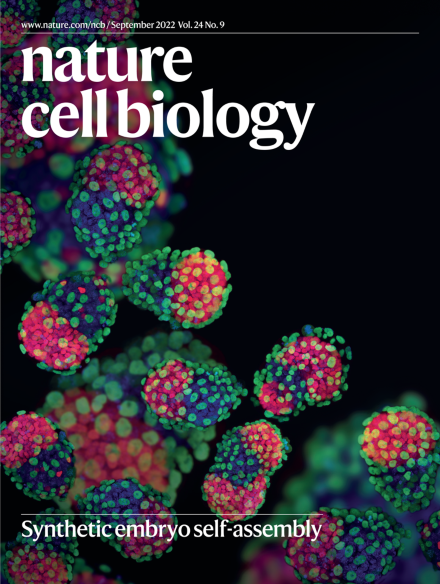伴侣介导的自噬通过突触蛋白质组的性别特异性重塑来调节神经元活动。
IF 19.1
1区 生物学
Q1 CELL BIOLOGY
引用次数: 0
摘要
伴侣介导的自噬(CMA)在衰老和神经退行性疾病中下降。神经元中CMA的缺失导致小鼠神经退行性变和行为改变,但CMA在神经元生理学中的作用在很大程度上是未知的。本研究表明,CMA缺乏导致神经元过度活跃、癫痫易感性增加和钙稳态破坏。cma缺乏的雌性突触前神经递质释放和NMDA受体介导的传递增强,而雄性突触后ampa受体活性升高。比较定量蛋白质组学显示,CMA降解的突触蛋白存在性别二态性,雌性突触前蛋白质组优先重构,雄性突触后蛋白质组优先重构。我们在老年小鼠和阿尔茨海默病小鼠模型中证明遗传或药理学激活CMA可以恢复突触蛋白水平,降低神经元的高兴奋性和癫痫易感性,并使神经传递正常化。我们的发现揭示了CMA在调节神经元兴奋性中的作用,并强调了这一途径作为减轻与年龄相关的神经元衰退的潜在靶点。本文章由计算机程序翻译,如有差异,请以英文原文为准。

Chaperone-mediated autophagy regulates neuronal activity by sex-specific remodelling of the synaptic proteome
Chaperone-mediated autophagy (CMA) declines in ageing and neurodegenerative diseases. Loss of CMA in neurons leads to neurodegeneration and behavioural changes in mice but the role of CMA in neuronal physiology is largely unknown. Here we show that CMA deficiency causes neuronal hyperactivity, increased seizure susceptibility and disrupted calcium homeostasis. Pre-synaptic neurotransmitter release and NMDA receptor-mediated transmission were enhanced in CMA-deficient females, whereas males exhibited elevated post-synaptic AMPA-receptor activity. Comparative quantitative proteomics revealed sexual dimorphism in the synaptic proteins degraded by CMA, with preferential remodelling of the pre-synaptic proteome in females and the post-synaptic proteome in males. We demonstrate that genetic or pharmacological CMA activation in old mice and an Alzheimer’s disease mouse model restores synaptic protein levels, reduces neuronal hyperexcitability and seizure susceptibility, and normalizes neurotransmission. Our findings unveil a role for CMA in regulating neuronal excitability and highlight this pathway as a potential target for mitigating age-related neuronal decline. Khawaja et al. show sex-specific differences in neuronal-activity regulation by chaperone-mediated autophagy and that loss of chaperone-mediated autophagy leads to defective neuronal physiology and increased seizure susceptibility, linking chaperone-mediated autophagy to neuronal excitability.
求助全文
通过发布文献求助,成功后即可免费获取论文全文。
去求助
来源期刊

Nature Cell Biology
生物-细胞生物学
CiteScore
28.40
自引率
0.90%
发文量
219
审稿时长
3 months
期刊介绍:
Nature Cell Biology, a prestigious journal, upholds a commitment to publishing papers of the highest quality across all areas of cell biology, with a particular focus on elucidating mechanisms underlying fundamental cell biological processes. The journal's broad scope encompasses various areas of interest, including but not limited to:
-Autophagy
-Cancer biology
-Cell adhesion and migration
-Cell cycle and growth
-Cell death
-Chromatin and epigenetics
-Cytoskeletal dynamics
-Developmental biology
-DNA replication and repair
-Mechanisms of human disease
-Mechanobiology
-Membrane traffic and dynamics
-Metabolism
-Nuclear organization and dynamics
-Organelle biology
-Proteolysis and quality control
-RNA biology
-Signal transduction
-Stem cell biology
 求助内容:
求助内容: 应助结果提醒方式:
应助结果提醒方式:


